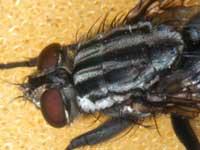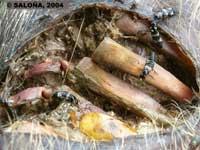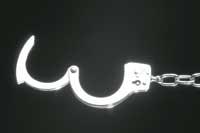When did he die? The insect will tell you

The species Liosarcopbarra aegyptica was not known in the Iberian peninsula until it was found in the Leioa campus. (Photo: Marta Saloña)
When the dead are found by chance, one wants to know when death has occurred. For this purpose, information about the corrupt body can be extracted. A curious study reveals the time of decay: studies of flies that feed on dead tissues, corpses, etc.
They are insects conducive to forensic matters. These flies, after a few minutes, are able to perceive the corpse, even at a distance of kilometers (humans need a few hours to appreciate the unpleasant smell of this corpse). Later they colonize this corpse. The eggs are laid and after a few hours the larvae are born. When these larval flies grow and grow older, they leave the corpse. In fact, this same corpse also contains its predators. Therefore, it can happen that a crime is going to be studied and no larva of insects is discovered, since the insects have already abandoned the body.
Research into the growth or development of these insects is a complex task, especially in the Basque Country. In fact, knowledge about the time of growth of these insects and distribution patterns is quite scarce. How to know what insects are in the corpse?
Insects in bodies

Researchers from the forensic entomology service of the UPV-EHU analyze the colonizing insects of corpses and their breeding times. Someone can ask: “And all this, why?” to know how long the corpse is dead. In fact, if not enough data is available to whiten the author of this crime, it may be of great interest to study the insects present in this corpse. In this sense, in the films, frequently, questions are raised to the suspect as: Where was he between twelve in the evening and two in the morning? For example, when research results show that the person died during that time.
For the study of the insects of the corpses, in the first place, the researchers install several traps in open field. Of course, these traps have a hook to attract insects that in each case are of interest. For example, insects that feed on dead animals are attracted by animal viscera. They attract mainly female mature flies. The problem is that females are more difficult to identify, while males present their own characteristics more evident. For this reason, the researchers take larvae of these females until obtaining males that allow a more reliable identification of the species.

They are placed in a suitable culture medium in conditions similar to those that would have in a corpse. Measure your size every day until you complete the growth charts. These graphics are made at different temperatures. It is not the same as the decomposition of the corpse occurs in winter as in summer.
All larvae phases of some species have already been described. Therefore, once the corpse is located and the larvae are collected, they can know the fly species to which it belongs and calculate the time that the person has died, analyzing the cultivation tables of these larvae.
Without a doubt, it can be information of great interest, especially for future forensic investigations that can be carried out in the Basque Country.
Published in 7K.
Buletina
Bidali zure helbide elektronikoa eta jaso asteroko buletina zure sarrera-ontzian











